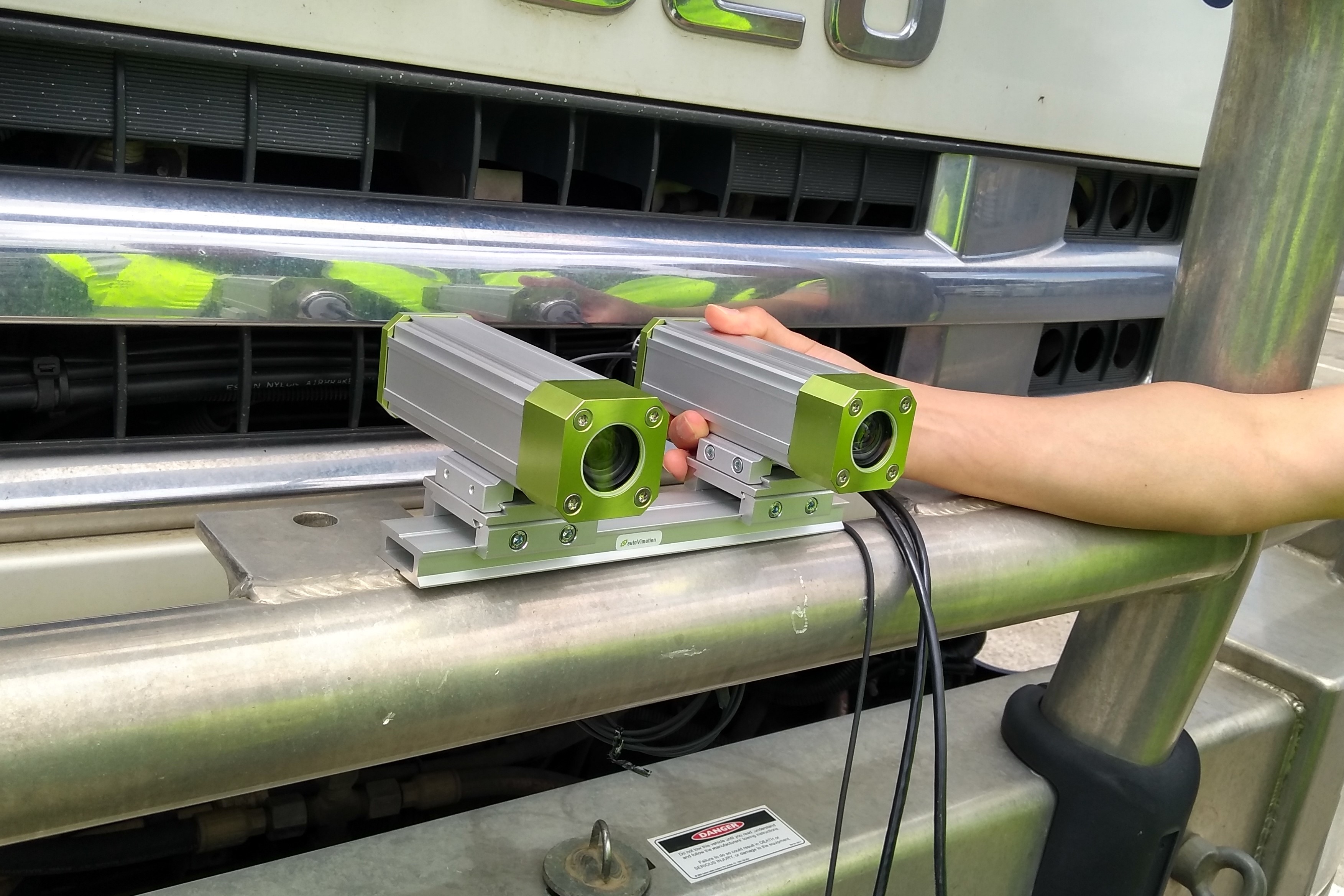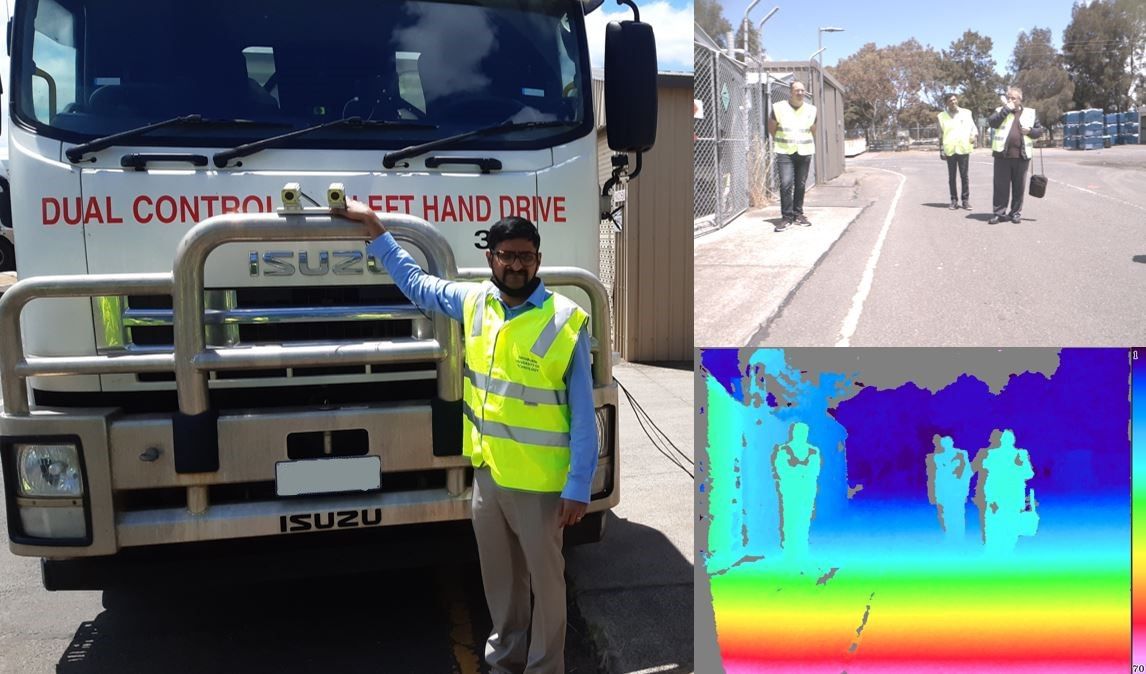5G garbage trucks driving the future of smart cities

The stereo vision and depth cameras attached to the garbage trucks will collect 3D perception data at a rate of 900 megabits per second.
In summary
- A new 5G project will use high-resolution cameras and GPS sensors attached to waste trucks to rapidly detect road and roadside assets that require maintenance
- This will drastically reduce the time it takes to identify and fix issues, saving up to 50 per cent of asset auditing costs
- Supported by $1.18 million in Federal Government funding, the project will help demonstrate how 5G and the Internet of Things can support smart cities around Australia
An interconnected network of garbage trucks could be the new frontline in repairing local roads, thanks to a research collaboration between Swinburne University of Technology and Brimbank City Council that utilises the 5G network and the Internet of Things (IoT).
The project will see high-resolution cameras and GPS sensors attached to Brimbank’s waste trucks. The rich data captured from these connected devices will be sent in real-time to a cloud-based system that can create an easy-to-use map of assets that require maintenance, such as road signs, bus shelters or damaged roads.
This will drastically reduce the time it takes to identify, document and fix issues, removing the need for costly manual reporting and auditing, and saving up to 50 per cent of asset auditing costs.
Supported by $1.18 million in funding from the Federal Government’s Australian 5G Innovation Initiative and working with Optus, the project will also help demonstrate how 5G can reliably support the needs of smart cities around Australia.
Bringing the Internet of Things to life
Director of Swinburne’s Factory of the Future and Digital Innovation Lab, Associate Professor Prem Prakash Jayaraman, says the project presents unique challenges that 5G and IoT technology can help solve.
‘Swinburne is bringing together researchers, government and industry to co-create safe, resilient solutions for smart and sustainable cities. Together, we are enhancing access to services, places and economic opportunities, and improving quality of life,’ Associate Professor Jayaraman said.
‘We are delighted to be working with the forward-thinking Brimbank Council, and utilising Swinburne’s leading capabilities and world-renowned expertise in Internet of Things and digital innovation to demonstrate a solution that can be used in cities across Australia and around the world.’
Brimbank Mayor Cr Jasmine Nguyen warmly welcomed the partnership.
‘Residents have told us via the Community Survey that improving the appearance of Brimbank’s roads, road signs, bus stop shelters and roadside spaces is a high priority,’ Cr Nguyen said.
‘This innovative 5G-based project offers us a quicker and more efficient way to identify which assets need maintenance, and to get the information to the work crews. Simply put, this project will help Council respond faster to assets that need maintenance.’
‘Council is pleased to be working with Swinburne University and Optus on this ground-breaking project. Our project will also lead the way for other councils considering 5G based solutions for road and roadside asset condition monitoring.’
Cutting-edge technology
The stereo vision and depth cameras attached to the garbage trucks will collect 3D perception data at a rate of 900 megabits per second. For comparison, average mobile download speeds in Australia in 2020 were around 43 megabits per second.

Test data from the cameras. Image: supplied.
To add extra complexity, the garbage trucks travel across every street in the council area each week and need to transmit the data in real-time while moving at varying speeds.
This makes the environment perfect for testing the capabilities of the super-fast 5G network, while also helping maintenance teams work more effectively.
As part of the project, maintenance teams will be able to get information directly on their phones and upload proof of maintenance performed on the spot.
With more than 900 kilometres of road under maintenance and an estimated $15 to $20 million spent every year of maintaining and improving road and roadside assets in Brimbank alone, it is hoped that the project will not only improve the lives and safety of local residents, but also help councils around Australia save millions.
-
Media Enquiries
Related articles

- Engineering
- Technology
- Aviation
Swinburne contributes to $270.5m Australian manufacturing research initiative
The Additive Manufacturing Cooperative Research Centre (AMCRC) seeks to transform Australia's healthcare, aerospace, and construction sectors.

- Aviation
- Sustainability
- Engineering
Australian-made sustainable powders to drive the future of advanced manufacturing
A high-tech spinout from Swinburne University of Technology will deliver Australian-made High Entropy Material (HEM) powders, developed from recycled industrial feedstocks, to advanced manufacturing and 3D printing facilities.

- University
- Engineering
- Sustainability
New Digital Manufacturing Hub launches at Swinburne to level up Australian industry
Australian manufacturing productivity and resilience could rise by as much 30 per cent, thanks to a new Digital Manufacturing Hub led by Swinburne.

- Science
- Sustainability
- Engineering
International project to support Australia’s transition to clean energy with next-gen electrolysers
Swinburne researchers are part of an international team is developing new electrolysers to support Australia’s transition to clean energy.

- Technology
- Science
- Engineering
Creating safer, more accessible processed foods with innovative AI-powered digital twin system
A new initiative is applying AI to food processing, using digital twins to ensuring texture modified foods such as purees and soups are safe for vulnerable Australians.
-

- Engineering
- Technology
- Aviation
Swinburne contributes to $270.5m Australian manufacturing research initiative
The Additive Manufacturing Cooperative Research Centre (AMCRC) seeks to transform Australia's healthcare, aerospace, and construction sectors.
Monday 28 April 2025 -

- Aviation
- Sustainability
- Engineering
Australian-made sustainable powders to drive the future of advanced manufacturing
A high-tech spinout from Swinburne University of Technology will deliver Australian-made High Entropy Material (HEM) powders, developed from recycled industrial feedstocks, to advanced manufacturing and 3D printing facilities.
Thursday 27 March 2025 -

- University
- Engineering
- Sustainability
New Digital Manufacturing Hub launches at Swinburne to level up Australian industry
Australian manufacturing productivity and resilience could rise by as much 30 per cent, thanks to a new Digital Manufacturing Hub led by Swinburne.
Monday 17 March 2025 -

- Science
- Sustainability
- Engineering
International project to support Australia’s transition to clean energy with next-gen electrolysers
Swinburne researchers are part of an international team is developing new electrolysers to support Australia’s transition to clean energy.
Wednesday 05 February 2025 -

- Technology
- Science
- Engineering
Creating safer, more accessible processed foods with innovative AI-powered digital twin system
A new initiative is applying AI to food processing, using digital twins to ensuring texture modified foods such as purees and soups are safe for vulnerable Australians.
Thursday 23 January 2025

